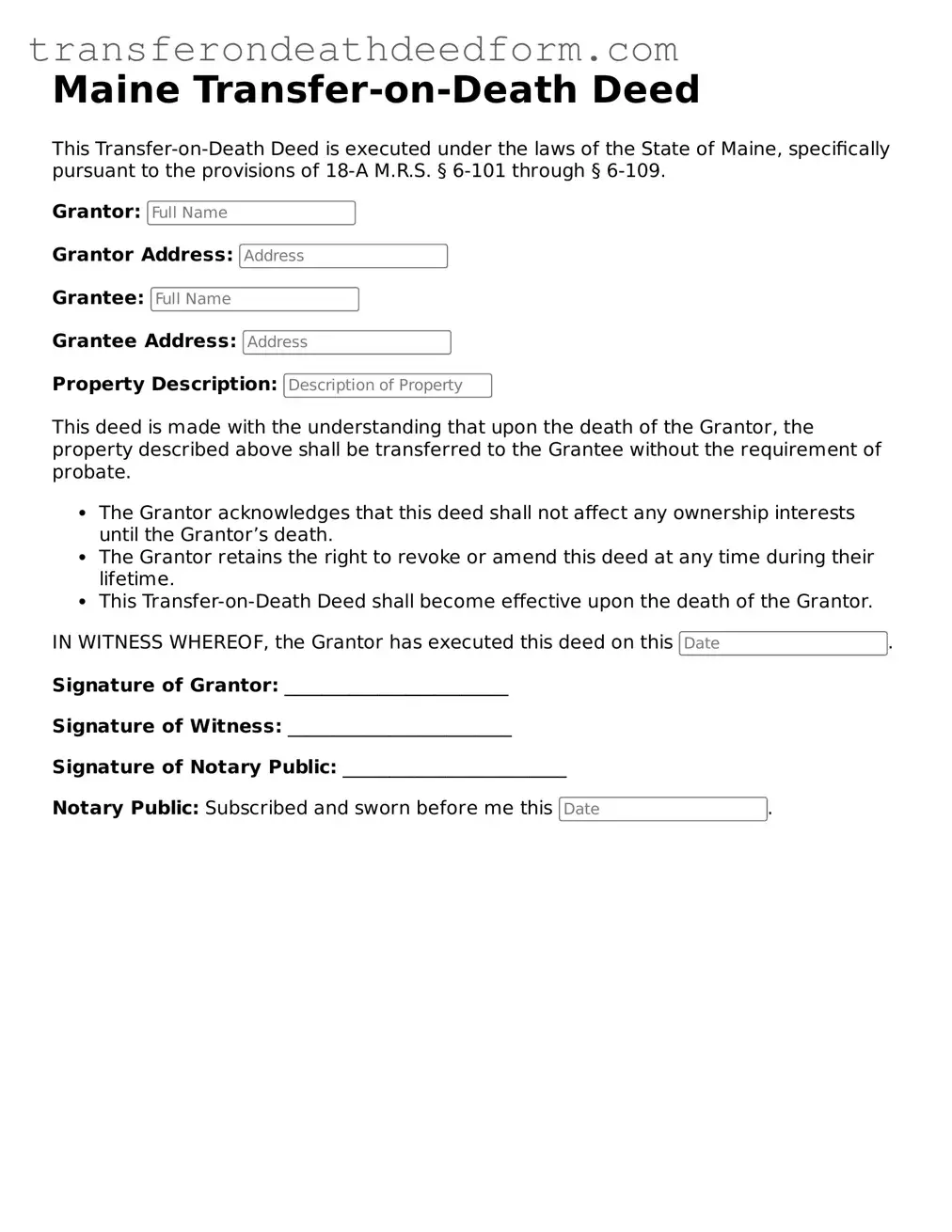Transfer-on-Death Deed Form for Maine
A Maine Transfer-on-Death Deed form allows property owners to designate beneficiaries who will receive their real estate upon their passing, without the need for probate. This straightforward tool simplifies the transfer process, ensuring that your wishes are honored and your loved ones are supported. Understanding how to properly utilize this form can make a significant difference in estate planning.
Get My Document
